Recombinant Zebrafish TBCE
| Cat.No. : | TBCE-3699Z |
| Product Overview : | Recombinant Zebrafish TBCE full length or partial length protein was expressed. |
- Specification
- Gene Information
- Related Products
- Case Study
- Application
- Download
| Species : | Zebrafish |
| Source : | Mammalian Cells |
| Tag : | His |
| Form : | Liquid or lyophilized powder |
| Endotoxin : | < 1.0 eu per μg of the protein as determined by the LAL method. |
| Purity : | >80% |
| Notes : | This item requires custom production and lead time is between 5-9 weeks. We can custom produce according to your specifications. |
| Storage : | Store it at +4 oC for short term. For long term storage, store it at -20 oC~-80 oC. |
| Storage Buffer : | PBS buffer |
| Gene Name | tbce tubulin folding cofactor E [ Danio rerio (zebrafish) ] |
| Official Symbol | TBCE |
| Gene ID | 664760 |
| mRNA Refseq | NM_001039989 |
| Protein Refseq | NP_001035078 |
| UniProt ID | Q5U378 |
| ◆ Recombinant Proteins | ||
| TBCE-3699Z | Recombinant Zebrafish TBCE | +Inquiry |
| TBCE-2852H | Recombinant Human TBCE Protein, Myc/DDK-tagged, C13 and N15-labeled | +Inquiry |
| TBCE-4632H | Recombinant Human TBCE Protein, Myc/DDK-tagged, C13 and N15-labeled | +Inquiry |
| TBCE-5968R | Recombinant Rat TBCE Protein | +Inquiry |
| TBCE-3135H | Recombinant Human TBCE, GST-tagged | +Inquiry |
| ◆ Cell & Tissue Lysates | ||
| TBCE-1216HCL | Recombinant Human TBCE 293 Cell Lysate | +Inquiry |
Case 1: Li S, et al. Acta Pharm Sin B. 2023
Platinum drug resistance is a major cause of poor outcomes and relapse in liver cancer. This study found that high levels of a protein called Tubulin folding cofactor E (TBCE) are linked to this resistance. To overcome this, researchers developed nanoparticles that can carry both a TBCE-blocking agent and platinum drug, enhancing the cancer-killing effect and reducing drug resistance in liver cancer models.
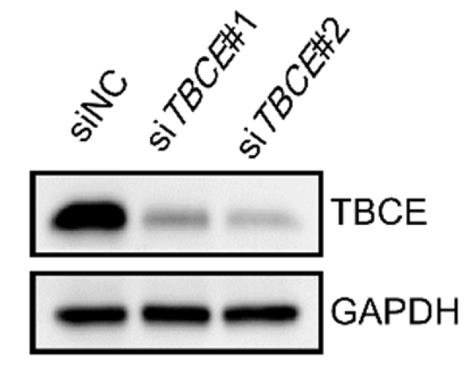
Fig1. The TBCE protein level of BEL-7402R was decreased using siTBCE transfection.
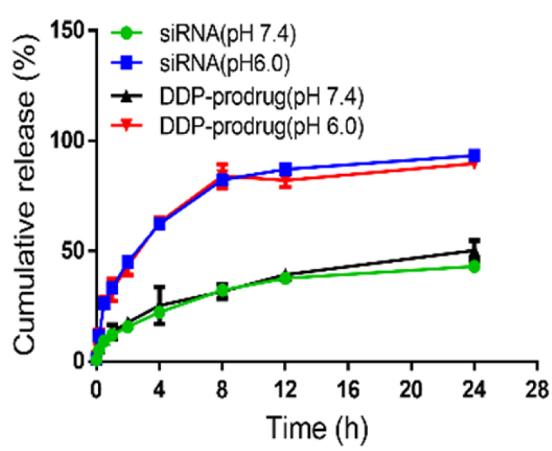
Fig2. Cumulative release of siTBCE and DDP in pH 7.4 and pH 6.0.
Case 2: Serna M, et al. J Cell Sci. 2015
The stability of tubulin is maintained by chaperones known as tubulin cofactors (TBC). Although the process of tubulin heterodimer formation is well understood, its breakdown is less clear. In this study, researchers conducted biochemical tests to explore how human TBCE and TBCB chaperones facilitate the separation of α-tubulin from β-tubulin. Using electron microscopy, they visualized the structure of the complex formed by α-tubulin, β-tubulin, and the chaperones after heterodimer dissociation. By combining this with X-ray crystallography data, researchers detailed the complex's molecular structure. The separation is an energy-independent event triggered by the interference of TBCE's CAP-Gly and LRR domains with the α-tubulin-β-tubulin interface. The complex's UBL domains likely interact with the proteasome, promoting α-tubulin degradation.
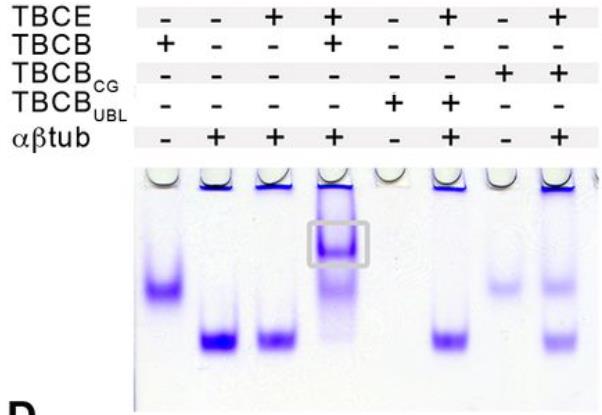
Fig1. α-tubulin–β-tubulin dimer dissociation analyzed by native gel electrophoresis, using TBCE and different TBCB forms.
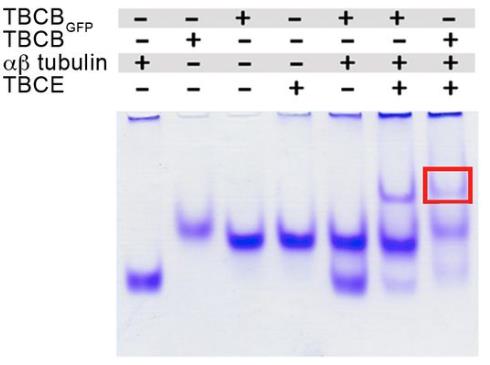
Fig2. The TBCB–GFP mutant retains its ability to enhance tubulin dissociation by TBCE.
Zebrafish TBCE protein is homologous to human TBCE protein. In terms of application, more applications are in scientific research.
Protein research: Through systematic proteomics studies, such as the application in zebrafish embryonic development, the role of TBCE protein in biological processes can be comprehensively analyzed to provide data support for further understanding of the molecular mechanism of its development. Protein precipitation-based drug target screening methods can be used to identify drug molecules interacting with TBCE, which is of great significance for the development of new drugs and the study of drug action mechanisms.
Drug research: The use of high-throughput drug target screening technology can be used to identify drug targets, including a variety of proteins TBCE. As a drug target, TBCE plays an important role in cancer therapy. It is involved in regulating the stability and quantity of tubulin, affecting cell division and signal transduction. Therefore, inhibitors or activators of TBCE may become drugs for the treatment of certain types of cancer. In the field of nanomedicine, TBCE can be used to develop nanoparticles for targeted drug delivery. For example, by encapsulating TBCE siRNA and cisplatin in nanoparticles, it is possible to reverse tumor resistance to cisplatin.
Basic research on diseases: Mutations in the TBCE gene are associated with certain genetic diseases, such as Kenny-Caffey syndrome. Using zebrafish models to study TBCE's function could help scientists better understand the pathogenesis of these diseases and search for potential treatments. TBCE plays a key role in the construction and maintenance of the cytoskeleton. In cell biology studies, recombinant TBCE protein can be used to explore the regulatory mechanisms of microtubule dynamics and cell motility.
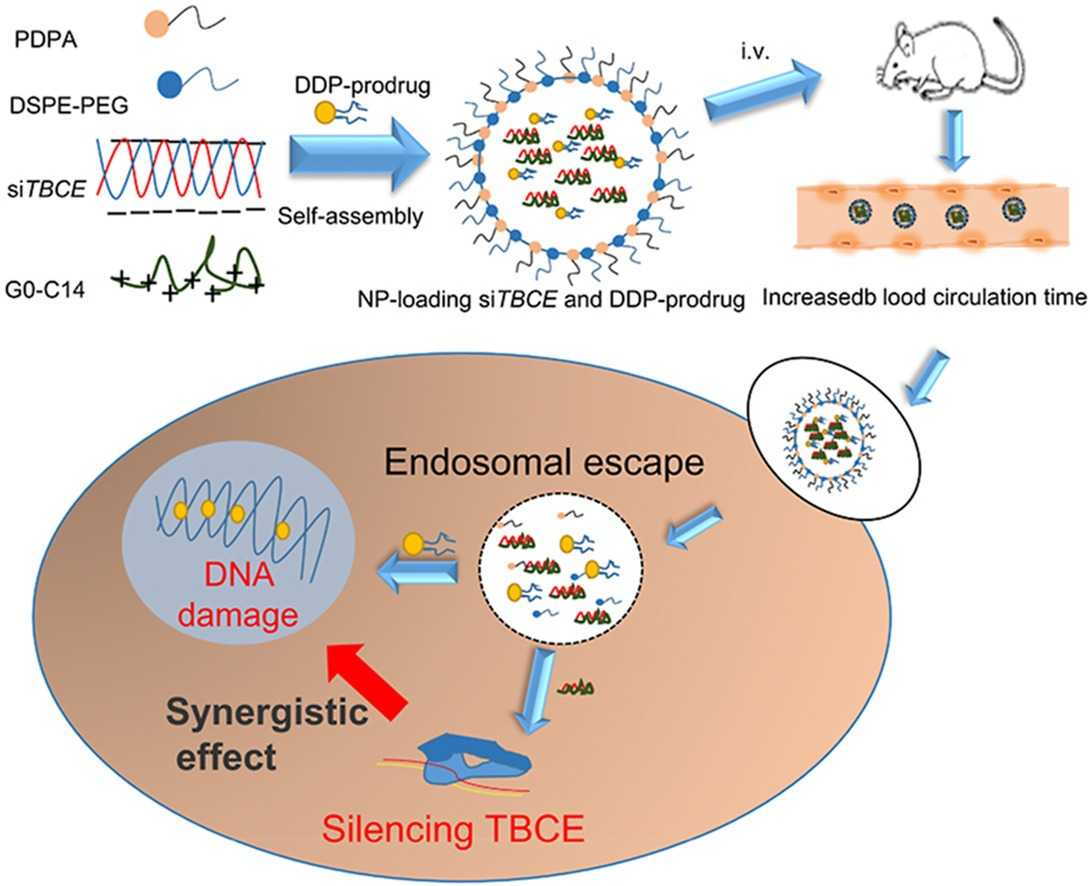
Fig1. The endosomal pH-responsive NP platform for systemic delivery of siTBCE and DDP for synergistic chemoresistance liver cancer therapy. (Senlin Li, 2023)
Not For Human Consumption!
Inquiry
- Reviews
- Q&As
Ask a Question for All TBCE Products
Required fields are marked with *
My Review for All TBCE Products
Required fields are marked with *
Inquiry Basket


